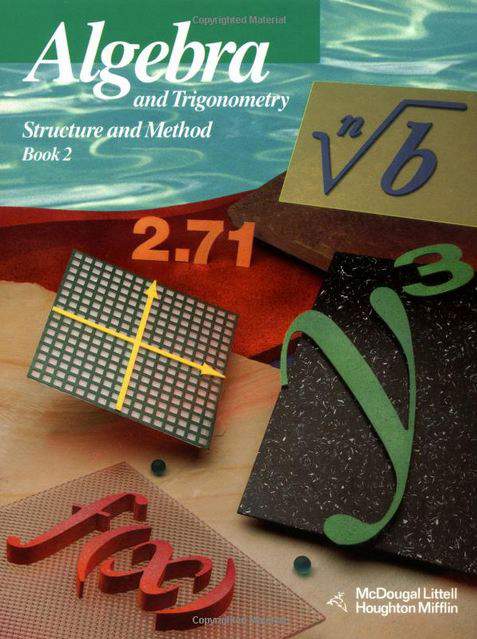Click video to play

This is a quick preview of the lesson. For full access, please Log In or Sign up.
For more information, please see full course syllabus of Algebra 2
For more information, please see full course syllabus of Algebra 2
Algebra 2 Operations on Functions
Lecture Description
We can apply arithmetic operations on functions. That means that two functions can be added, subtracted, multiplied, or divided. The domain of the function that comes as a result of these operations will be the intersection of the domains of the two functions. This lecture also covers the composition of functions. The interesting thing to know about a composition of functions is that you start working from right to left, which you'll see in the video. An important rule to remember is that composition is not commutative, which means that the composition of f and g is not the same as the composition of g and f.
Bookmark & Share
Embed
Share this knowledge with your friends!
Copy & Paste this embed code into your website’s HTML
Please ensure that your website editor is in text mode when you paste the code.(In Wordpress, the mode button is on the top right corner.)
×
Since this lesson is not free, only the preview will appear on your website.
- - Allow users to view the embedded video in full-size.
Next Lecture
Previous Lecture









































 Carleen Eaton
Carleen Eaton Grant Fraser
Grant Fraser
 Answer Engine
Answer Engine



0 answers
Post by DJ Sai on September 15, 2018
6:48, confusion
1 answer
Last reply by: Jerry Xu
Fri Aug 3, 2018 11:22 PM
Post by Krishna vempati on June 27, 2018
im confused on division
1 answer
Thu Mar 27, 2014 6:40 PM
Post by HEMAL SINDHVAD on March 9, 2014
please this example (∜27)/(√3)
I got answer 3^1/4 is it correct or not can you please explain if is wrong
0 answers
Post by Prince Dalieh on July 10, 2013
Jose Gonalez-Gigato,You are 100% right I think she makes a mistake in example 1 when solving for (f-g)(*).
0 answers
Post by julius mogyorossy on June 23, 2013
I was experimenting with radicals, I found that what is true in one reality, is not true in the reality, dimension of radicals, I was very surprised to learn this, what does this have to teach me about reality at large, I can't believe I could learn anything more, but maybe I am wrong.
1 answer
Last reply by: Norman Cervantes
Sun May 5, 2013 8:20 PM
Post by Norman Cervantes on May 5, 2013
16:25, minor error, 9-6+1 should equal 4 not 2.
1 answer
Wed Dec 28, 2011 9:23 PM
Post by Jose Gonzalez-Gigato on December 28, 2011
In Example I, subtraction should be +4x^4, not -4x^4; the minus signed was incorrectly dropped when writing down the terms within parenthesis.